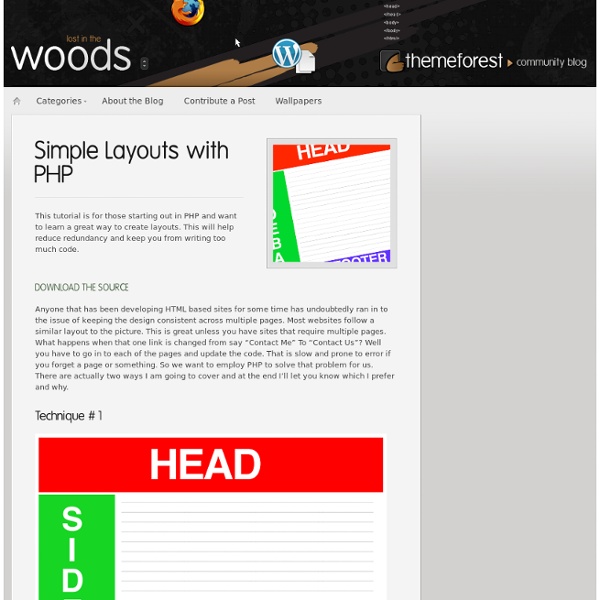Simple Layouts with PHP

extremely useful PHP classes
PHP PSD Reader A few weeks ago, I wrote an article about this PHP which allow you to display any Adobe PSD file on screen. Very usefull to create preview of PSDs designed for clients, for example.Download Browser detect One of the most common (and boring) problem for front-end developers is definitely cross-browser compatibility. This PHP class will detect almost all browsers and simplify your cross-browser work.Download Akismet Remember those days without spam? ADOdb The large majority of websites and web apps are using databases to store all kinds of data. HTML Purifier As it name tells, HTML Purifier is a PHP class created to help you writing a better code. Google charts API Charts are very useful and highly asked by clients, but they can be a lot of work. pChart pChart is another chart class, and it is as good as Google charts API. PHP Excel Excel documents are highly popular in the corporate world. Country from IP Cache Manager WPGet
pChart | a PHP Charting library
Ruby Programming Language
10 sites developers should have in their bookmarks
Mysql Format Date MySQL Format Date helps you to format your dates using the MySQL DATE_FORMAT function. Just select a common date format and then change it to your suit your needs. Visit site: Script Src Are you tired of hunting the Internet in order to find the script tag for the latest version of the Javascript library of your choice? Visit site: Em Chart I never been a fan of ems in CSS files, but sometimes you have to deal with it. Visit site: Twitter API Explorer If you’re using the Twitter API in the site you build, you’ll for sure enjoy this very handy website which allow you to search through the Twitter API. Visit site: Browser Sandbox Cross browser compatibility is definitely one of the biggest problems a web developer has to face in his daily job. Visit site: PHP Forms Visit site: .htaccess editor Smush it! CSS Compressor
Related:
Related:



